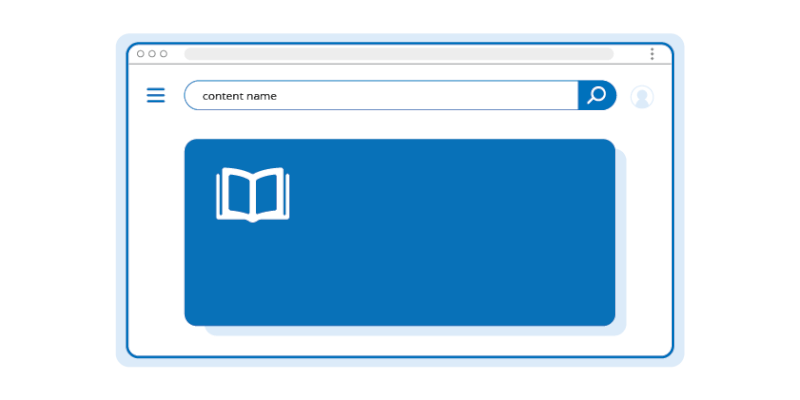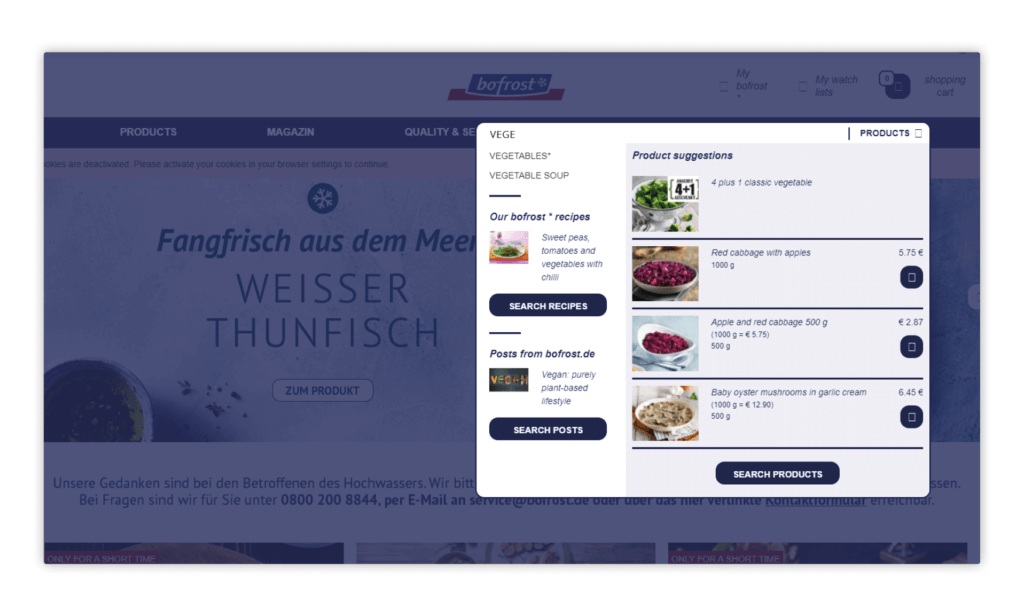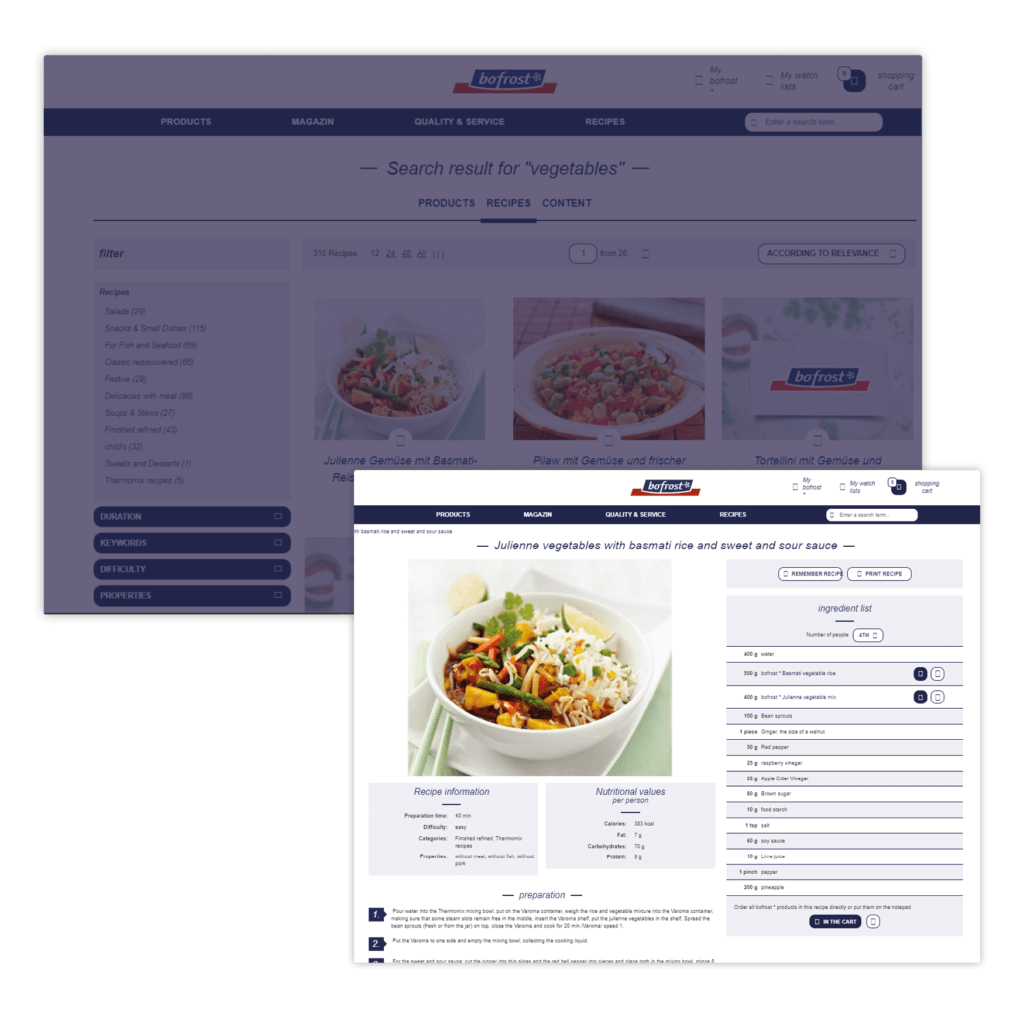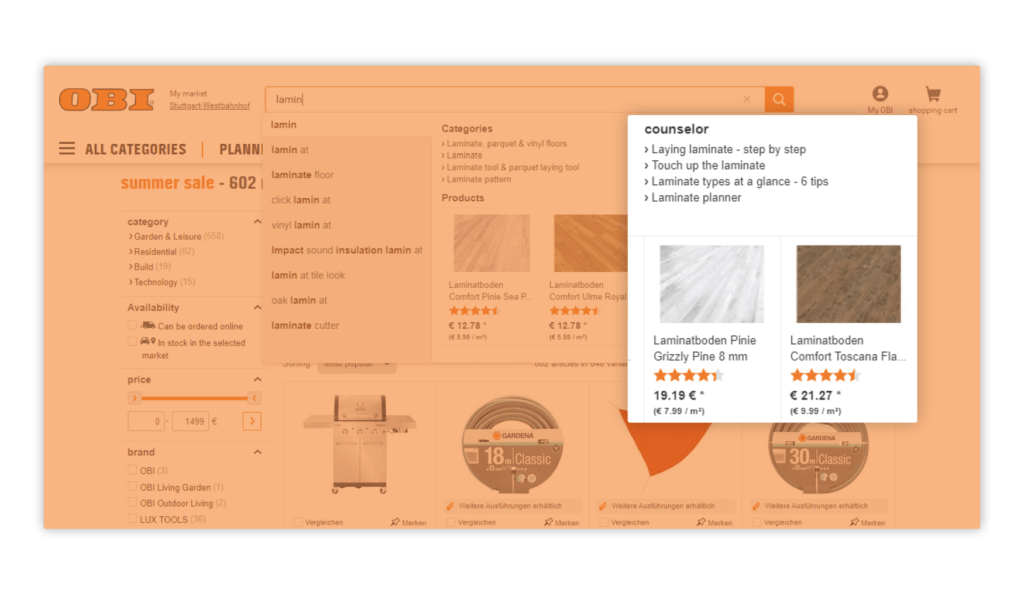Learn how content search can enrich the online shopping experience, help visitors be confident in their purchase decision, and build loyalty to your brand.
Content remains king, especially in online stores. How-to articles, videos, instruction manuals, technical drawings and more, can be of great help, not only for SEO reasons but also to inform, persuade and convert visitors into customers. That is, however, if your visitors are able to find the relevant content exactly when they need it. This article will teach you just that, how to successfully implement an intelligent content search.
How content search boosts your conversion rate
An online store is neither a learning platform nor a lifestyle magazine – it’s about selling products and building long-term customer loyalty. And yet, well-crafted content can provide a valuable service by helping consumers with the buying decision, building relationships, and differentiating you from competitors. That is why online retailers across all industries are investing in content creation.
Here are just a few ideas of use cases:
Shop the look – A very effective concept for fashion and beauty suppliers. For example, pages that show a particular outfit or makeup look can give customers the ability to add the products directly to their shopping cart.
Shopping by recipe – Recipe pages are a popular source of inspiration for cooks of all levels, which is why it’s important to include them in online grocery stores. Where a recipe is listed, the corresponding ingredients can be directly available for purchase.
Datasheets in B2B – Even professional buyers don’t always know every product detail. Content such as datasheets, catalogs, and brochures can help B2B stores make the right buying decisions quickly.
DIY tutorials – Inspirational and informative content for DIYers is a prime example of digital advice done right, be it via blog posts, tutorial videos, or even live demonstrations.
Exercise tips – Provide training tips for sports enthusiasts, whether it’s recommending brands, equipment, or supplements that can be directly (and conveniently) purchased.
Research Online Purchase Offline – Online traffic has increased significantly in the wake of the lockdowns. Today, more and more visitors are searching online for information before they go into their nearest store. That’s why making local store information such as opening hours, locations, and discounts findable via the search is key to maintaining success. Learn more about Geo solutions.
Where to feature content in your online shop
Where in the customer journey you chose to place content is of course based on your individual requirements. After all, you know your customers best. For which target groups do you want to offer content? How do customers who may not know their way around search in your shop? What type of information do they need to make a purchase decision? These types of questions will determine how and where you should implement your content.
To get you started, we’d like to offer a few examples of best practices spots. An advantage is they can all be combined with one another.
1. Display content within the search suggestions
Your suggest menu can take on the role of a store advisor. Instead of only showing product suggestions, you can integrate links to content right in the menu. For example, online visitors who are planning a DIY project but only roughly know what they need can be led directly from the home page to the appropriate advisory page.
How it works in FACT-Finder: In the backend, go to the Suggest menu and click on Whitelist. There you can integrate search suggestions that do not appear in the product data or in the log files. Under Add Whitelist Entry, create your content redirects for the desired search terms and finish it off with a graphic if you’d like.
2. Redirect queries to content pages
You can also forward a search query directly to content pages. It’s important that you only use this option for search terms that have a distinct nature i.e., terms and conditions, blog, legal, to avoid forwarding customers who want to buy products to information pages.

How it works in FACT-Finder: In the backend, go to the Campaigns menu, click Add, and then Forward. Then simply define the period of time and the trigger (aka search term) for this campaign. The redirect is done.
3. Feature content directly in the search results
Sometimes it’s not clear whether a search query is informational or transactional. In such cases, we recommend that you not create a redirect but instead mix links to contents directly in the search results. In the frontend, it appears to visitors among the product results. In the backend, lies a link to a suitable and helpful content page. This gives interested visitors the opportunity to dig deeper into the topic, and those who don’t need any information can simply ignore the content.
How it works in FACT-Finder: In the backend, go to the Campaigns menu, click Add, click Feedback, and then click Add. Design your graphic and the corresponding text and then define where the content should appear in the results.
4. Create content tabs in the search results
Another way to embed content in the results is to designate a separate section for the content. This allows visitors to switch between product and content results easily, creating a clear and elegant separation.
How it works in FACT-Finder: FACT-Finder can also search your CMS content. Use a separate database in your own FACT-Finder channel to implement a content results list. For each search query, FACT-Finder will then display the product results as well as the matching content.
Why having a smart search is important for content
As with products, the same applies to content: the better the site search understands your customers, the better your online shop performs. Thankfully, FACT-Finder has got you covered. Every one of our modules works together to continuously improve the results of content searches. Our solution offers you:
Error tolerance – Visitors searching for content are often unfamiliar with the topic at hand, making it all the more important that the search be able to compensate for spelling errors and understand colloquial synonyms.
Automatic optimizations – The most popular content results are featured at the top of the search results. This way, your online shop continuously improves in meeting the demands of visitors and is able to adapt to current trends without any manual effort.
Recommendations (shoppable content) – Integrate product recommendations directly into your content. Your products will be displayed in a highly relevant context, increasing the likelihood of purchase.
Analytics and A/B testing – How your visitors interact with the content, how they search for it, and when they buy – you can track all of this easily and at a granular level, giving you valuable data for your shop optimizations.
Best practices for content search
1. Jumbo helps customers find helpful content for DIY projects
This Swiss DIY chain operates in more than 40 stores, offers a range of 65,000 products, and generates annual sales of more than 500 million Swiss francs. Jumbo started out in 1982 as a full-range retailer and has since specialized more and more in DIY. Today, Jumbo is the only DIY-dedicated shop in Switzerland.
Although Jumbo has not been in e-commerce for long, the way it addresses industry demands has quickly established them as a role model – especially when it comes to content search. Mario Coiro, Team Leader of Customer Insights
and Customer Experience at Jumbo, describes the company’s approach to supporting its DIY customers.
“In the do-it-yourself space, customers tend to be interested in projects rather than individual products. They’re either rebuilding or creating something new. For example, if you want to repaint your office, you may ask yourself what you need. Paint is obvious , but angled brushes for corners and masking tape are also important. You have to remind customers of this. And when it comes to the paint, there are different types for indoor and outdoor. So, if you’re not an expert, you need advice or inspiration. With FACT-Finder, we can respond to this need. In addition to products, we display helpful content that is relevant to the search query right within the search results. The format is nonintrusive and we can mix content as we see fit. Customers can simply click and view the content if they’re interested or ignore it and continue scrolling through the products.”
Jumbo knows that helpful content in DIY is key, that’s why they display their content in the search suggest menu, as a product result, and as its own tab – always matching the customer’s context.
2. Bofrost delivers fast access to their recipe portal
‘What should I cook today?’ is a question millions of people ask themselves every day, and no online grocery store answers them better than Bofrost, Europe’s largest direct seller of frozen foods. Bofrost has built a comprehensive portal around recipes and nutritional advice which the retailer makes easily accessible via search and navigation.
 Bofrost’s search delivers an intelligent menu filled with product suggestions as well as content suggestions including recipes and articles.
Bofrost’s search delivers an intelligent menu filled with product suggestions as well as content suggestions including recipes and articles. On Bofrost’s recipe pages, visitors can add the needed ingredients directly to their shopping cart. A true best practice for shoppable content.
On Bofrost’s recipe pages, visitors can add the needed ingredients directly to their shopping cart. A true best practice for shoppable content.3. OBI encourages ROPO with its content
OBI, the leading retailer in Germany’s DIY industry, is present across 10 European countries with over 570 DIY stores. Local presence, however, is not enough for OBI which is why the company also increasingly focuses on its digital sales channels. The goal of its strategy is to generate high, additional online sales.
The biggest challenge in achieving this is linking offline and online worlds. André Kotoll, Head of Department E-Services, explains why it is so important for OBI to bring its brick-and-mortar store to the web.
“Customers usually make the purchase decision at home, in front of their devices – whether it’s a PC, laptop, tablet or smartphone. That’s why we have to deliver a OBI-worthy experience online, inspire potential buyers, and guide them quickly to the right products.”
ROPO, short for research online purchase offline, is a trend that has become increasingly popular with OBI customers. Customers want to gather information online before making a purchase, particularly so in the DIY industry. Guided content is designed to help customers prepare for their visit to the physical store, where they can take a hands-on look at the products they’re interested in and, when needed, get more specific advice.
 OBI facilitates access to advisory content by displaying it directly in the suggest menu, enabling visitors to make a purchase decision with confidence.
OBI facilitates access to advisory content by displaying it directly in the suggest menu, enabling visitors to make a purchase decision with confidence.Making content discoverable is just as important as creating it
Online shops can’t offer the hands-on shopping experience of a physical shop but they can present purchase-critical information more easily and in greater detail. As a digital retailer, you should definitely be taking advantage of this. The investment of creating content, however, only pays off when the content can be found. Then, it can be a real opportunity to support customers in their decision-making process and create loyalty to your brand.